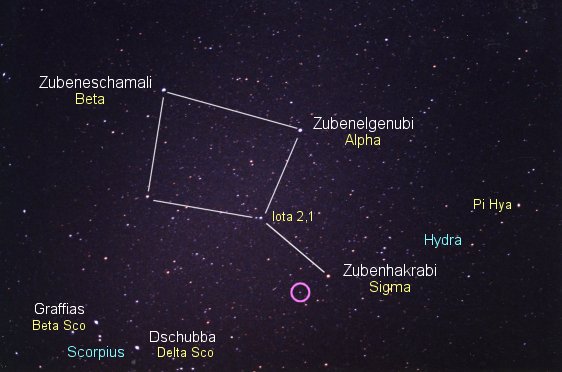

THE PLANETThe circle shows the location of the class G dwarf (G4 V) 23 Librae (in the constellation Libra). The planet is in roughly the middle of the mass range of those planets so far discovered, with a minimum mass 1.58 times that of Jupiter. Unlike many of the first planets found, it is also relatively far from its parent star, averaging 0.81 Astronomical Units (122 million kilometers, 12 percent farther than Venus is from the Sun). Like so many extraterrestrial planets, the orbit is relatively eccentric, the planet approaching as closely as 0.62 Astronomical Units, and receding to as far as 1.00 AU, as far as the Earth is from the Sun, the whole course taking 260 days. |